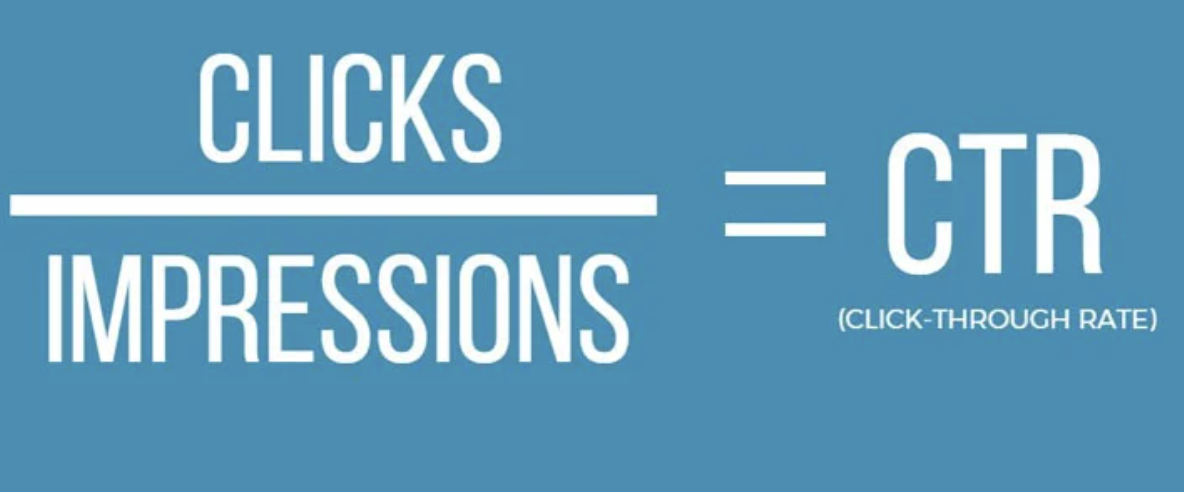How to Gauge the Effect of CTR Adjustment on Your Advertising
Understanding the subtleties of click-through price (CTR) adjustment in advertising and marketing is crucial for companies aiming for authentic individual engagement. By analyzing key metrics such as conversion prices and bounce rates, marketing professionals can reveal prospective disparities that might emerge from fabricated improvements.
Comprehending CTR Control
Recognizing CTR adjustment is essential for marketing experts seeking to optimize their campaigns and guarantee information stability. Click-through price (CTR) describes the ratio of users who click on a specific link to the total variety of customers that check out the promotion or content. Control of this metric can happen via different methods, including making use of deceitful advertising and marketing methods, click farms, or automated crawlers. These methods can synthetically inflate CTR numbers, causing misguided advertising strategies and misallocation of resources.
The implications of CTR manipulation extend beyond plain data distortion; they can undermine rely on electronic marketing. When services count on inflated metrics, they may invest in ineffective campaigns, inevitably damaging their roi. In addition, systems might punish advertisers involving in such practices, causing additional implications for their advertising and marketing initiatives.
To successfully deal with CTR manipulation, marketing experts have to develop a comprehensive understanding of their information sources and analytics devices. By utilizing advanced monitoring approaches and looking at web traffic resources, they can make certain and determine irregular patterns that their performance metrics reflect genuine customer involvement - LinkDaddy CTR Manipulation. This watchfulness is vital for promoting long-lasting success in a progressively affordable electronic landscape
Secret Metrics to Evaluate
Efficient evaluation of essential metrics is essential for assessing truth efficiency of marketing projects and spotting possible CTR control. One key statistics to take into consideration is the Click-Through Price (CTR) itself, which stands for the proportion of customers who click an advertisement to the total variety of individuals that view it. A sudden spike in CTR may show manipulation, demanding more investigation.
In addition, keeping track of conversion prices is essential. A high CTR with a low conversion price can signal that the clicks are not real or that the targeting is misaligned (CTR Manipulation). In a similar way, evaluating bounce rates can supply understanding right into individual involvement; a high bounce price after a click may suggest that the traffic is not quality-driven.

Tools for Measurement

In addition, A/B testing devices such as Optimizely or VWO can assist in experimentation with numerous advertisement versions to determine which aspects drive higher CTR. These tools permit marketing professionals to analyze real-time efficiency and make data-driven modifications. Social media get more site analytics tools, like Hootsuite or Sprout Social, can likewise be instrumental in comprehending CTR within social platforms, offering insights right into audience behavior and involvement patterns.
Additionally, warm mapping tools, such as Hotjar, can expose exactly how users interact with advertisements, assisting to determine where enhancements can be made. Incorporating these devices develops a durable measurement structure, allowing online marketers right here to determine the effects of CTR manipulation effectively. Inevitably, the ideal choice of dimension tools is vital for making notified advertising and marketing choices and optimizing campaign efficiency.

Assessing Long-lasting Effects
One should think about the lasting effects of CTR manipulation on total advertising efficiency, as short-term gains can usually mask deeper effects. In time, artificially pumped up click-through prices may result in decreased count on from customers and internet search engine alike. When individuals repeatedly experience misleading practices, they might come to be reluctant to involve with the brand, causing reduced conversion rates in the Get More Info future.
In addition, algorithm updates from systems such as Google are created to prioritize authentic interaction over inflated metrics. Companies that rely on CTR manipulation may discover themselves penalized, leading to a decrease in natural reach and visibility. This can have a cascading result on brand trustworthiness and customer loyalty, eventually undermining the very goals that the preliminary adjustment sought to accomplish.
Moreover, the data accumulated from controlled CTR may misguide marketing professionals in their strategy development. Counting on skewed information can lead to illinformed campaigns that stop working to resonate with the target audience, leading to squandered resources and missed out on opportunities. It is critical for marketing experts to assess the long-lasting implications of CTR adjustment and prioritize lasting, ethical engagement strategies for lasting success.
Ethical Factors To Consider in CTR Manipulation
In the world of electronic advertising and marketing, honest factors to consider surrounding CTR manipulation are paramount. While the wish to boost click-through prices (CTR) can lead to short-term gains, the possible lasting consequences on brand name integrity and consumer depend on can not be forgotten. Manipulating CTR commonly entails methods that may deceive customers, such as clickbait headlines or misleading advertising and marketing methods. These approaches can result in a short-term rise in traffic however may inevitably erode consumer self-confidence.
Additionally, moral worries extend to conformity with policies such as the Federal Profession Payment (FTC) guidelines, which mandate transparency in advertising and marketing. Falling short to follow these requirements can expose companies to lawful implications and harm their reputation. Marketing professionals must think about the implications of their approaches on individual experience and the broader market landscape.
In addition, the rise of artificial knowledge and automation in advertising provides further moral issues. The possibility for mathematical bias or the exploitation of customer information questions about liability and fairness. Ultimately, ethical marketing practices must prioritize openness, sincerity, and respect for the consumer, cultivating lasting partnerships that transcend mere metrics like CTR. Stabilizing performance with ethics is crucial for sustainable success in the digital marketplace.
Final Thought
In conclusion, measuring the impact of CTR control on marketing calls for a detailed analysis of key metrics, consisting of click-through prices, conversion rates, and bounce rates. Utilizing analytics devices and carrying out A/B testing can provide useful understandings into customer interaction and traffic high quality. In addition, examining long-term impacts and sticking to ethical considerations is important for informed decision-making. Eventually, a data-driven method makes certain that advertising and marketing methods are reliable and straightened with authentic individual communications.
Understanding the subtleties of click-through price (CTR) adjustment in advertising is essential for organizations striving for authentic individual interaction.Efficient evaluation of crucial metrics is essential for assessing the real efficiency of advertising and marketing projects and finding possible CTR manipulation.One must consider the long-term effects of CTR control on general marketing efficiency, as short-term gains can often mask much deeper ramifications.In the world of digital advertising and marketing, honest factors to consider surrounding CTR control are critical.In verdict, gauging the effect of CTR adjustment on advertising and marketing calls for a thorough analysis of vital metrics, including click-through rates, conversion rates, and bounce rates.